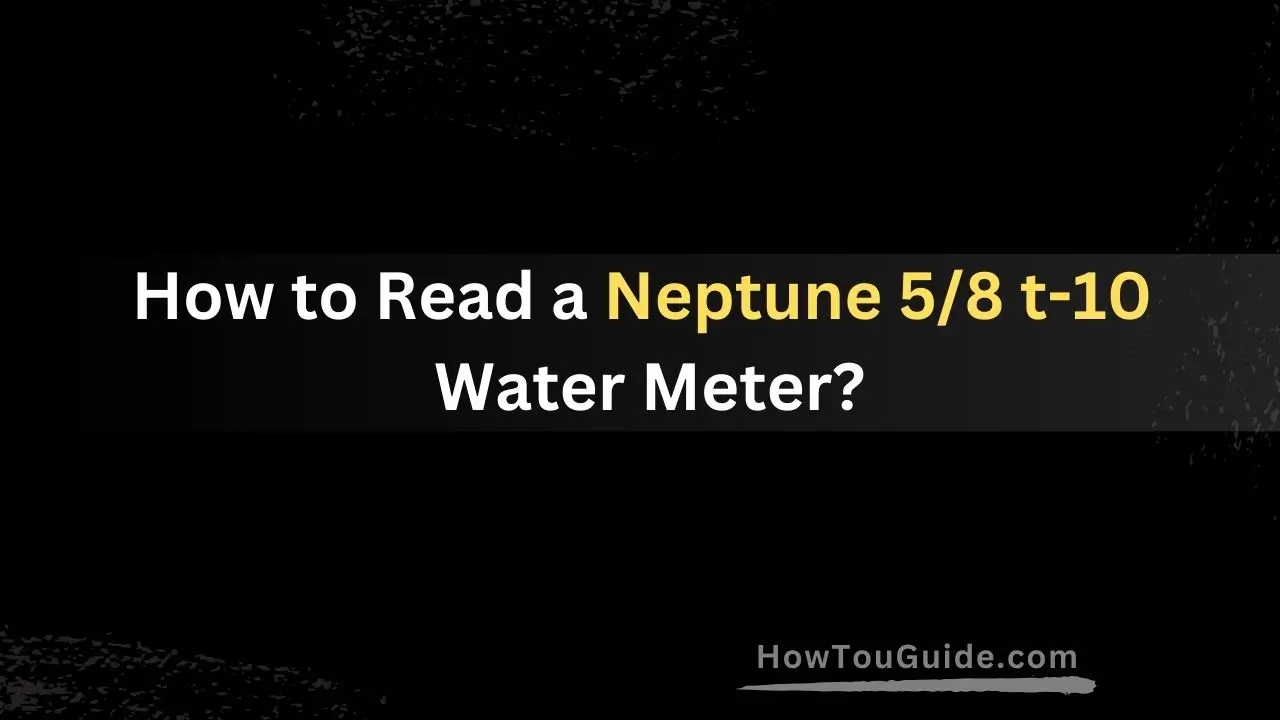How to Read a Neptune 5/8 t-10 Water Meter?
A water meter is a device that measures the volume of water used in a home or building. Water meters allow water providers to bill customers for their exact water usage, rather than estimating usage. There are two main types of water meters:
Analog vs Digital Meters
Analog water meters have dials with clock-like hands that spin to indicate water flow. Digital meters have an electronic display that shows water usage data.
Different Types of Water Meters
There are several major kinds of water meters, including:
Positive Displacement Meters
These have oscillating pistons or rotors that move as water goes through, allowing the meter to calculate flow.
Velocity Water Meters
These measure the speed of flowing water to figure out the volume used. Common varieties include single-jet, multi-jet, magnetic, ultrasonic, and turbine meters.
Compound Meters
Compound, or combination meters, are typically used for high-flow applications. They combine both positive displacement and velocity metering technology.
Fire Service Meters
These heavy-duty meters are designed specifically to handle flows required for fire sprinkler systems.
Introducing the Neptune 5/8 T-10 Water Meter
Neptune Water Meter Company
Neptune Technology Group manufactures a variety of water meters for residential, commercial, and municipal applications. Known for advanced metrology, Neptune meters feature robust build quality and extended product life.
5/8 inch Size
The first numbers refer to the pipe diameter the meter is designed to fit. 5/8 inch is a common residential size that can handle typical household flow rates.
T-10 Register Type
The T-10 is Neptune’s standard analog meter register. It tracks water usage and connects to Automatic Meter Reading (AMR) equipment.
T-10 Features
Key features of the Neptune T-10 register include:
Leak Detection
Sophisticated electronics detect flow during periods where no use should occur, a sign of leaks.
Data Logging
Built-in data logging allows water usage to be recorded in granular detail for analysis.
Remote Reading Options
Interfaces support automated collection of read data via equipment on meter reading trucks. This avoids needing to access each meter manually.
Reading the Dials
To take a manual reading of a Neptune 5/8 T-10 meter, you will need to inspect two sets of dials on the register:
Sweep Hand
The thin metal sweep hand shows smaller units of water usage. One full revolution represents 10 gallons utilized.
Odometer-Style Number Wheels
Larger number wheels below display total usage volumes with one turn equalling 1 cubic foot or 10 gallons.
Step-by-Step Guide to Reading Your Meter
Reading your Neptune residential water meter is straightforward. Follow these key steps:
Locate the Meter
Meters are usually found at the front edge of a property near the street. Look for a concrete, plastic, or metal lid.
Read the Sweep Hand
Note where the thin sweep hand is pointing. The markings indicate tenths of gallons from 0 to 10.
Read the Number Wheels
Gallon Units Wheel
Read the position of the number wheel showing units up to 10 gallons. Add this to the sweep hand reading.
Cubic Feet Wheel
Read the digits tracking total cubic feet used. 1 cubic foot = 7.48 gallons.
Calculate Water Usage
Subtract Previous Reading
To determine usage since the last meter read, subtract the prior reading from the current one.
Convert Units
If needed, convert the total cubic feet to gallons for billing purposes using the conversion factor above.
Detecting Leaks
Higher than normal usage between reads typically indicates leaks. Contact your water provider if this persists.
Contacting Neptune
For questions on Neptune meters, visit their website at neptunetg.com or call (800) 645-1892.
Conclusion
Neptune 5/8 T-10 water meters are extremely dependable and make reading your household water usage a breeze. Just locate the meter, read the handy dials, and do a quick usage calculation.
This analog meter also has contemporary features like leak alerts that can help identify issues early and conserve precious water. Learning to periodically check your meter reading is a smart way to monitor consumption and utility costs.
FAQs
What size pipe is a 5/8 inch water meter for?
A 5/8 inch meter fits standard 3/4 inch residential plumbing and service lines. The “5/8” designation refers to the size of the meter’s internal flow component.
Where is my water meter located?
Outdoor water meters are typically found in a concrete or plastic box near the curb or property line closest to the main water line access point. Indoor meters may be in basements or utility rooms.
How do I read the dial with the star and triangle?
This “leak detector” dial indicates flow during periods where none should occur. Even a tiny persistent trickle can signal concealed plumbing issues.
What does the cubic feet wheel measure?
This odometer-style wheel displays lifetime water volume in cubic feet. 7.48 gallons equals 1 cubic foot, allowing conversion for billing purposes.
Why is my sweep hand not moving?
If no water is running in the building, the flow hand may not rotate. Open a faucet and check if it begins tracking usage. If it still doesn’t move, contact your water provider in case repair is needed.






